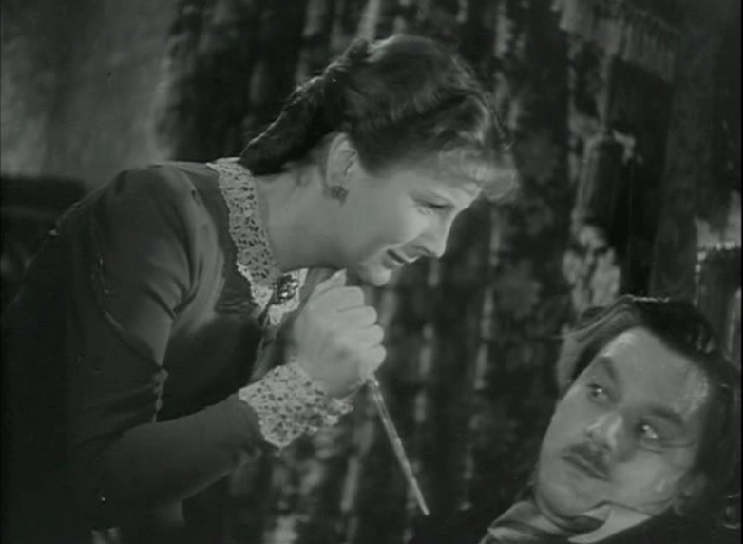Movie Review: Gaslight (1940) directed by Thorold Dickinson
It has been twenty years since the shocking crime at 12 Pimlico Square. Alice Barlow was murdered by an intruder, the house ripped apart in a search, and the famous Barlow rubies disappeared. All this time, the house has lain empty. But now someone has been found that isn’t afraid of possible ghosts and has agreed to lease both #12 and the recently vacant #14 next door. Paul Mallen (Anton Walbrook) and his wife Bella (Diana Wynyard) have moved into the lower floors of Number Twelve, along with two maidservants. Rumor has it that Bella is rather high-strung and prone to seeing and hearing things that aren’t there, and small items go missing around her.

In reality, Paul has been manipulating events to make it appear that Bella is losing her grip on reality, so that Bella cannot trust her own memory or senses. He’s been hiding her mail, forbidding her to contact anyone on the outside, and threatening to have her examined by a doctor for the purpose of certification as mad. He’s also been carrying on an affair with the pretty maid Nancy (Catherine Cordell), though how much of that is just him manipulating the maid as well is up for debate.
What Paul doesn’t know is that he’s been spotted in the street by Mr. Rough (Frank Pettingell), a former police officer who now runs a livery stable. Rough is certain he’s seen Paul before, and the associations make him think Paul is up to something. Rough begins an unofficial investigation.
This was the first movie adaptation of the 1939 stage play, also known as Angel Street. It’s not as star-studded as the 1944 version with Olivia de Havilland, Charles Boyer, and Angela Lansbury as Nancy. But it’s well worth watching on its own.
We get the term “gaslighting” for a particular tactic abusers use to make their victims doubt their sanity from this story. And Paul is certainly doing plenty of that, though the actual gaslight is more of an accidental byproduct, flickering in a way that would indicate there are people turning on the gas in other rooms where no one should be. (Paul’s there, following his main motivation.) It’s soon obvious that Paul married Bella for her money specifically so he could move to 12 Pimlico Square, but why?
There are generally good performances all around, and Walbrook is chilling as Paul.
Content note: mental and emotional abuse are central to the story, and even knowing that going in, those scenes can be hard to watch.
Since this is a lesser-known version, it doesn’t play as often on movie channels, and may make a fresher impression.

